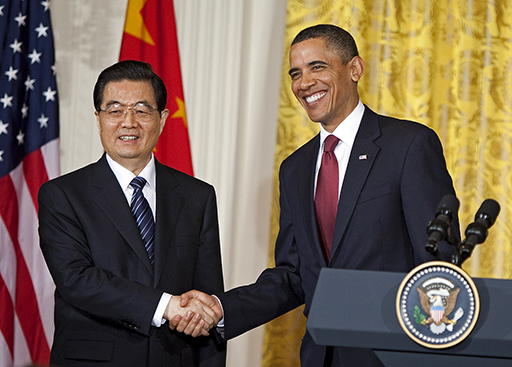3.4 Forms of interdependence: zero-sum, negative-sum and positive-sum games
In this section, you will focus on situations of interdependence on the assumption that states are pursuing absolute gains, and only look to increase their own gains, whether that is a rise in national income, increased military capabilities or some other goal. You will come back to situations where states pursue relative gains in Section 3.8.
- Q: What does the pursuit of absolute gains imply for cooperation between states?
Even in situations where states pursue absolute gains, interdependence can give rise to a number of different forms of interaction between states and different ways in which states might exercise power. In some approaches to the study of international relations these different forms of interdependence are characterised as ‘games’. International relations scholars use three different scenarios to identify different kinds of possible relationship, or outcomes from interaction:
- positive-sum interactions, where the sum total of gains (gains of both parties added together) is positive
- negative-sum interactions, where the sum total of gains (gains of both parties added together) is negative
- zero-sum interactions, where the gains of one exactly match the losses of the other, so the sum total of gains (gains of both parties added together) is zero.
Each implies different possibilities for cooperative relations such as agreements on trade liberalisation, arms control, or environmental issues.
Continuing with the assumption that states are pursuing absolute gains, positive-sum interactions offer the best hope for cooperation because there are positive gains (benefits) to be had. Win–win situations, where both parties gain from a relationship or a new agreement, on trade for example, are the most obvious example. When President Obama speaks of China’s collaboration in ‘jump-starting’ economic recovery, or in limiting nuclear proliferation, he is alluding to these kinds of shared gains where both parties benefit from a set of actions. However, positive-sum interactions can also include situations where one party gains and the other loses, so long as the sum total of gains is positive (the gains of the first outweigh the losses of the other). Here cooperation is still possible, though it may require the state which gains to offset the losses of the other.
Negative-sum interactions are where total losses are negative. Lose–lose situations, where both parties lose, are never likely to be the intended outcome of state policy. However, situations such as a trade war (where each state imposes tariffs limiting trade with the other), war (where each state fails to achieve its military objectives in the manner hoped for), or arms races (where each state ends up spending vast sums on military build-up with no appreciable gain to their security) are all examples that might be characterised as negative-sum outcomes. A worsening of relations between China and Taiwan, as happened in the 1950s and again in 1996, leading to a Chinese military build-up and a US response, could be seen as a lose–lose situation: the costs of such action are high and neither ends up more secure than they were initially. Misperception and miscalculation, where the reactions of the other state are not as expected, or the costs of a chosen course of action are much higher than anticipated, can play an important role in creating negative-sum situations. Negative-sum interactions can also exist where one side makes gains but these are more than offset by the losses of the other, so that the interaction makes sense for one side only. Obviously, these interactions can’t be the basis of cooperative interaction.
Finally, zero-sum interactions are those in which the gains of one exactly match losses of the other. These are inherently conflictual situations because the interests and gains of one party are at the direct expense of the other. It is argued that negotiations to combat climate change often turn into a zero-sum conflict. As China became the world’s largest emitter of greenhouse gases, the United States and other Western states insisted it take on its fair share of the burden. China and other developing countries argued that the problem had arisen because of the levels of consumption over many decades in Western countries. The US response was that China was growing rich by feeding this very Western consumption. Each wants the other to take a greater share of the burden of reducing carbon dioxide emissions in a situation where China doing more means the United States has to do less, and vice versa. Here, a gain for one is a loss to the other; turning climate change negotiations into a zero-sum conflict (Rachman, 2010, p. 268). You will return to discussion of zero-sum conflicts in Section 3.8.

